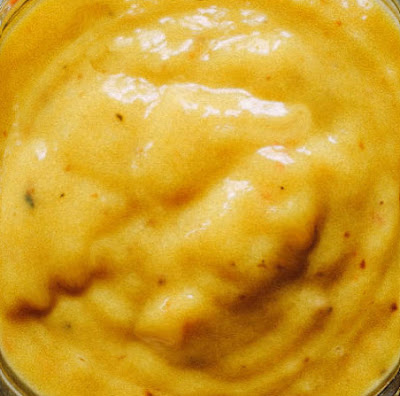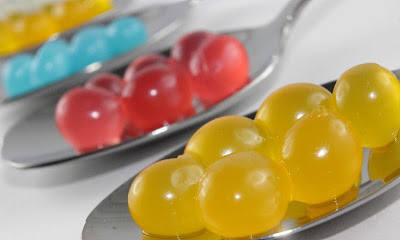Due to its texture and bulk, eggplant is sometimes used as a meat substitute in vegan and vegetarian cuisines.
It is difficult to imagine that eggplant was once thought to be poisonous or toxic, feared for its bitterness, and overlooked for the beauty of its flowers. Nowadays eggplants are nearly impossible to resist—available in all colors, shapes, and sizes—with a flesh that becomes silky when cooked.
This dish is easier and tastier than Rachael ray eggplant lasagna recipe. This lasagna recipe replaces the traditional pasta with eggplant slices and adds layers of your favorite cheese.
It is healthful and delicious lasagna. Read more details and learn how to make it in just few quick and easy steps.
YIELD: 12 SERVINGS
INGREDIENTS:
1¼ to 1½ lbs. fresh eggplant
2 teaspoons salt (or 1½ teaspoons salt if not draining eggplant)
2 large eggs
1 cup flour
6 tablespoons extra-virgin olive oil
¼ teaspoon coarsely ground black pepper
4 to 5 cups of Mary Gualdelli’s Tomato Sauce (refer to the recipe below)
Use canned tomato sauce if you are vegetarian
8 oz. provolone cheese, sliced
12 oz. mozzarella cheese, grated
COOKING DIRECTIONS:
1) Peel eggplant and cut crosswise into 3/8-inch-thick slices.
Sprinkle slices with salt, layer them in a metal colander, and set colander in sink (see Salting Eggplant before Frying below). Set a heavy glass plate on top of eggplant and weight with heavy cans of food. Let drain for 30 minutes to 1 hour. Rinse eggplant slices under cold, running water to wash off excess salt. Pat dry with paper towels.
2) Beat eggs in deep plate or shallow bowl. Place flour on another plate. Dip eggplant slices in egg, dip in flour to coat, and set aside. Heat 2 tablespoons of the olive oil in a large frying pan over medium heat. Add a layer of eggplant slices, sprinkle with pepper (and salt, if you have not drained the eggplant), and cook until nicely browned, 3 to 4 minutes each side. Remove to a platter. Continue to sauté the remaining eggplant slices in batches, adding the remaining olive oil to pan as needed.
3) Set the oven rack in the middle position. Preheat the oven to 350° F. Coat a 9-inch by 13-inch ovenproof glass baking dish with vegetable spray or coconut oil. Line a baking sheet with foil.
4) Spread a layer of tomato sauce over bottom of prepared baking dish. Arrange half of eggplant slices on top. Spread with another layer of tomato sauce. Cover with a layer of Provolone and sprinkle with grated mozzarella. Add remaining eggplant slices in a second layer, spread with tomato sauce, cover with remaining provolone, and sprinkle with remaining mozzarella. Press down gently so that layers adhere.
5) How long do you cook eggplant lasagna? Coat a sheet of foil with vegetable spray and place it, oiled side down, over top of lasagna to cover. Set lasagna on prepared baking sheet to catch any sauce that drips. Bake 40 minutes. Uncover and continue baking until lasagna is bubbling and cheeses are melted.
6) Serve lasagna hot. Allow leftovers to cool, cover with paper towels and then plastic wrap, and store in refrigerator.
Some recipes suggest that sliced eggplant be salted and drained in a colander to remove excess liquid. Removing this liquid prevents the eggplant from soaking up excess oil when it is fried.
When using this method, moderately salt the eggplant slices and place them in colander in the sink or on a deep plate. Set another heavy glass plate on top of eggplant and place cans of food on top to weight the eggplant.
Allow the eggplant to drain for 30 minutes to 1 hour. Rinse the slices under running water to wash off excess salt and pat dry with paper towels before frying.
Some cooks believe that salting and draining eggplant will remove any bitter juices. The larger varieties of eggplant have more moisture than smaller varieties. Many home cooks do not salt and drain their eggplant.
Somewhat Related Post: So you like vegetarian food, I assumed you want to live a healthy and long productive sexy life. I compiled the best tips on living longer based to the latest scientific research on how to live longer. I read all the new books… :-)
Follow the link below…
11 Tips to Live a Healthy Life: The Most Effective Ways to Live Longer
YIELD: ABOUT 12 CUPS
INGREDIENTS:
4 to 6 tablespoons extra-virgin olive oil
3 cups chopped onion
½ lb. ground beef
½ lb. ground pork
3 oz. pancetta, chopped
½ lb. ground lamb
2 (28-oz.) cans tomato puree
¼ cup tomato paste
2 cups low-sodium beef stock
1½ teaspoons salt
1 teaspoon coarsely ground black pepper
½ teaspoon red pepper flakes
3 cloves garlic, smashed
1 teaspoon dried oregano
½ teaspoon dried thyme
2 tablespoons chopped fresh parsley
4 teaspoons firmly packed brown sugar
COOKING DIRECTIONS:
1) Heat 2 tablespoons of the oil in a frying pan over medium heat. Add onion and cook until translucent, 5 to 7 minutes. Remove onion to a large Dutch oven or heavy-bottomed pot. Add beef, pork, and pancetta, if using, to frying pan, add more oil if needed, and cook until meat is still a little pink. Remove to Dutch oven. Add lamb to frying pan along with a little more oil, if needed, and cook until still slightly pink. Remove to Dutch oven.
2) Add tomato puree, tomato paste, and stock to Dutch oven and stir thoroughly. Add salt, pepper, red pepper flakes, garlic, oregano, thyme, parsley, and brown sugar. Cover and bring to a boil over medium heat. Reduce heat and simmer, stirring occasionally, for 2 hours. Uncover and cook until sauce thickens, about 20 minutes more. Check frequently to make sure sauce doesn’t burn. Pour sauce into containers and cool to room temperature. Store in covered containers in the refrigerator or freezer.
Beef, pork, and lamb do not have to be completely cooked before adding to sauce. As they continue cooking, they will add more flavor to the sauce.
Why sliced eggplant does changes color to brown? The browning of eggplant flesh results from the oxidation of polyphenols, such as the most abundant phenolic compound in the fruit, chlorogenic acid.
Taken as a dietary supplement by some health conscious people. Chlorogenic acid slightly reduces blood pressure. It has been scientifically investigated for possible anti-inflammatory effects.
Related Post: How to Prevent Discoloration in Vegetables When Cooking
SLICING. Place the eggplant (or a piece of the eggplant) on its widest cut end and cut downward into slabs according to your preferred width.
Cut long eggplants of consistent width (like Japanese, Chinese, and some heirloom varieties) as you would other cylindrical vegetables. Once you’ve broken down bulbous globe eggplants into slabs, you can butcher them further in much the same way.
White eggplants have medium to thick skin that you may need to peel. They are quite meaty—but sweet and mild.
The long slender eggplants have mildly sweet, creamy flesh and tender deep purple (Japanese) or light purplish pink (Chinese) skin.
A) How to Select Eggplant? Eggplant comes in many sizes and shapes, but as a general rule, younger (smaller) eggplants are sweeter, have fewer to almost no seeds, and thinner skin.
I generally recommend small to medium eggplant for lasagna, but larger ones are fine for grilling steaks or roasting and turning into a puree.
Choose for an eggplant that is very shiny and heavy for its size and gives slightly to the touch: It should be neither rock-hard nor squishy.
Avoid eggplants with puckered skin or soft spots that indicate bruising.
B) How to Store Eggplant? Use eggplants within a few days of purchase to avoid their likely bitterness.
Eggplant becomes bitter as it ages, so the real trick to solving that problem is to buy eggplant in season and use it as soon as possible.
Storing fresh eggplant requires a balancing act. If they become too cool for too long, their seeds will harden and their flesh will become bitter, but leaving them in the heat for too long will cause their moisture to evaporate and flesh to soften.
Place eggplants in an open plastic bag or paper bag. If you plan to use them within 24 hours, store them in a cool corner of your kitchen. Any longer, refrigerate them in the crisper.
REFERENCES:
Cara Mangini. 2016. The Vegetable Butcher: How to Select, Prep, Slice, Dice, and Masterfully Cook Vegetables from Artichokes to Zucchini, 3rd Printing edition. Workman Publishing Company. ISBN-13: 978-0761180524
Marilynn Brass (Author), Sheila Brass (Author), Andy Ryan (Photographer). 2008. Heirloom Cooking With the Brass Sisters: Recipes You Remember and Love. Black Dog & Leventhal. ISBN-10: 1579127843
Somewhat Related Post: What are Best Kitchen Appliances for College Students? - 19 Cool Dorm Room Cooking Appliances







